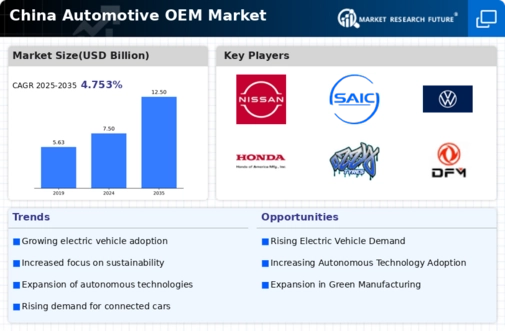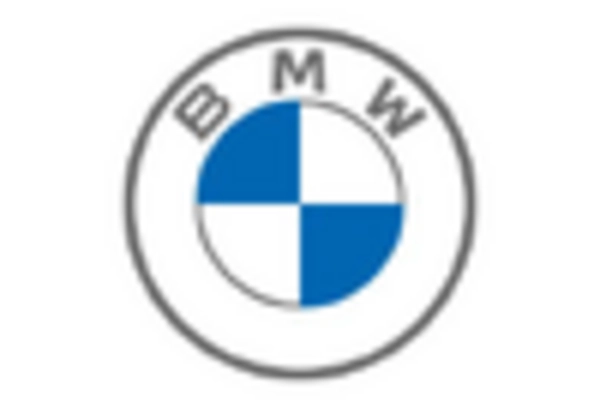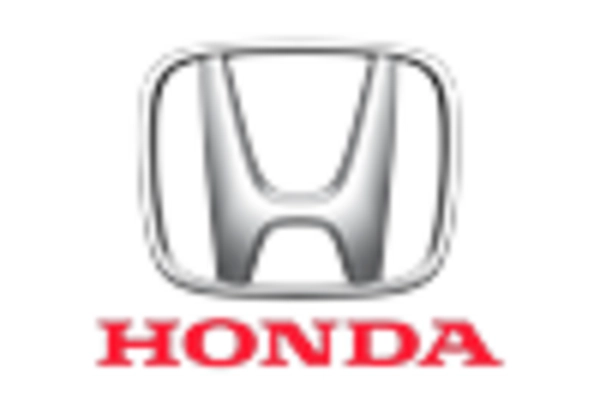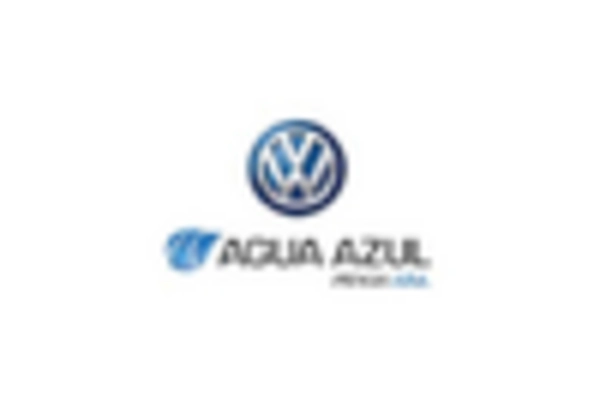Expansion of Charging Infrastructure
The expansion of charging infrastructure is a critical driver for the automotive OEM market in China. As the number of electric vehicles on the road increases, the demand for accessible and efficient charging solutions is becoming paramount. In 2025, China has over 1.5 million public charging points, a figure that is expected to grow by 20% annually. This extensive network is likely to alleviate range anxiety among consumers, thereby encouraging more individuals to consider electric vehicles. The automotive oem market is responding to this trend by collaborating with charging network providers to ensure compatibility and convenience for users. Furthermore, the government's investment in charging infrastructure is expected to reach $10 billion by 2027, further solidifying the foundation for EV growth. This development not only supports the transition to electric mobility but also enhances the overall attractiveness of the automotive oem market.
Government Incentives for EV Adoption
The automotive OEM market in China is experiencing a notable boost due to government incentives aimed at promoting electric vehicle (EV) adoption. These incentives include subsidies, tax breaks, and favorable financing options for consumers and manufacturers alike. In 2025, the Chinese government allocated approximately $15 billion to support the development of EV infrastructure and production capabilities. This financial backing is likely to enhance the competitiveness of local automotive oem market players, encouraging innovation and investment in sustainable technologies. Furthermore, the government's commitment to reducing carbon emissions aligns with the automotive oem market's shift towards greener alternatives, potentially increasing the market share of EVs to 30% by 2030. Such initiatives not only stimulate demand but also foster a conducive environment for research and development within the automotive oem market.
Technological Advancements in Manufacturing
Technological advancements in manufacturing processes are significantly influencing the automotive OEM market in China. The adoption of Industry 4.0 technologies, such as automation, artificial intelligence, and data analytics, is transforming production efficiency and quality. In 2025, it is estimated that 40% of automotive oem market manufacturers have integrated smart manufacturing solutions, leading to reduced production costs and improved product quality. These innovations enable companies to respond swiftly to market demands and customize vehicles according to consumer preferences. Moreover, the shift towards sustainable manufacturing practices is prompting investments in eco-friendly materials and processes. As a result, manufacturers that embrace these technological advancements are likely to enhance their competitiveness in the automotive oem market, potentially increasing their market share and profitability.
Growing Interest in Autonomous Driving Technologies
The growing interest in autonomous driving technologies is reshaping the automotive OEM market in China. As consumers become more accustomed to advanced driver-assistance systems, the demand for fully autonomous vehicles is expected to rise. In 2025, Market Research Future suggests that approximately 25% of consumers are willing to purchase vehicles with autonomous capabilities. This trend is prompting automotive oem market manufacturers to invest heavily in research and development to create safe and reliable autonomous systems. Collaborations with technology firms and universities are becoming increasingly common, as companies seek to leverage expertise in artificial intelligence and machine learning. The potential for autonomous vehicles to reduce traffic accidents and improve mobility solutions is likely to drive further interest and investment in this segment of the automotive oem market.
Rising Consumer Demand for Advanced Safety Features
Consumer preferences in the automotive OEM market are increasingly shifting towards vehicles equipped with advanced safety features. In China, a growing awareness of road safety and a desire for enhanced protection have led to a surge in demand for vehicles with technologies such as automatic emergency braking, lane-keeping assistance, and adaptive cruise control. Market data indicates that approximately 60% of consumers prioritize safety features when purchasing a vehicle. This trend is compelling automotive oem market manufacturers to invest in research and development to integrate these technologies into their offerings. As a result, companies that successfully innovate and provide advanced safety solutions may gain a competitive edge, potentially capturing a larger share of the automotive oem market. This focus on safety not only addresses consumer concerns but also aligns with regulatory requirements aimed at improving road safety standards.

















Leave a Comment